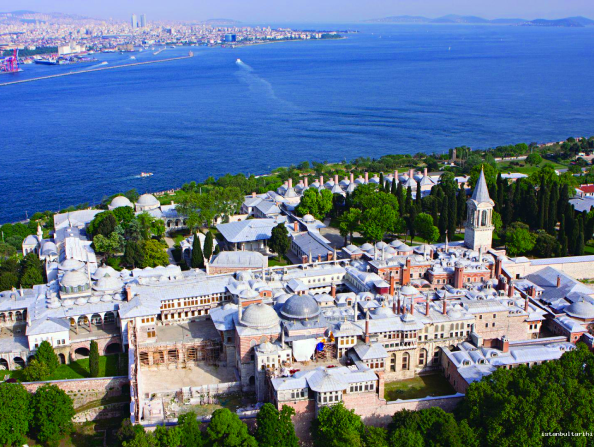TOPKAPI PALACE
Topkapı Palace: The Splendor of the Ottoman Empire and Traces of History
Topkapı Palace is a magnificent structure located on Istanbul’s historic peninsula, where the Golden Horn and the Sea of Marmara meet. It served as the administrative center of the Ottoman Empire and the residence of its sultans. From the 15th to the 19th century, Topkapı Palace was the political, administrative, and cultural hub of the Ottoman state. Today, it stands as one of the world's most significant museums, attracting visitors from around the globe.

History
Topkapı Palace was commissioned by Sultan Mehmed II (Mehmed the Conqueror) following the conquest of Constantinople in 1453. Construction began in 1460 and was completed in 1478. For nearly 400 years, the palace housed the Ottoman sultans. With the construction of Dolmabahçe Palace in the 19th century, Topkapı lost its primary role but never its significance. In 1924, under the orders of Mustafa Kemal Atatürk, it was converted into a museum.

Architectural Features
Topkapı Palace is one of the finest examples of classical Ottoman architecture. Covering an area of 700,000 square meters, it is surrounded by high walls. The palace complex consists of four main courtyards and various structures:
- First Courtyard (Imperial Courtyard): This publicly accessible courtyard begins at the Imperial Gate (Bab-ı Hümayun). It houses structures such as the Hagia Irene Church and the Imperial Mint.
- Second Courtyard (Divan Square): This courtyard, where state affairs were conducted, contains the Imperial Council Chamber (Divan-ı Hümayun), the entrance to the Harem, and the palace kitchens. The Justice Tower, from which the sultan symbolically oversaw justice, is also located here.
- Third Courtyard (Inner Palace Courtyard): This private section of the palace includes the Treasury, the Chamber of Holy Relics, and the Privy Chamber.
- Fourth Courtyard: The sultan’s recreational and leisure area, featuring tulip gardens, pavilions, and scenic terraces. The Baghdad Pavilion and the Revan Pavilion are among the most notable structures in this section.



Key Sections and Notable Structures
- Harem: The most mysterious and intriguing part of the palace, where the sultan’s family and concubines resided. The Harem consists of hundreds of rooms, corridors, and halls.
- Chamber of Holy Relics: This section contains sacred artifacts of great significance to the Islamic world, including the sword, cloak, and footprint of the Prophet Muhammad (PBUH).
- Palace Kitchens: A reflection of the richness of Ottoman cuisine, where meals were prepared daily for thousands of people. Today, porcelain and glass collections are exhibited in this section.
- Imperial Treasury: Showcasing the immense wealth of the Ottoman Empire, this section displays the sultans' jewelry, thrones, and valuable artifacts.



Cultural and Historical Significance
Topkapı Palace was not only a center of administration but also a representation of Ottoman culture and art. Its architecture, artworks, and collections reflect the grandeur of the Ottoman Empire. Additionally, the presence of sacred relics makes it a spiritual center for the Islamic world.


Topkapı Palace is an unparalleled structure that preserves the magnificence and wealth of the Ottoman Empire. With its architectural details, historical significance, and cultural treasures, it captivates visitors. As one of the most important historical landmarks of both Istanbul and the world, this extraordinary palace serves as a bridge between the past and the present. A visit to Istanbul would be incomplete without exploring this remarkable site.






